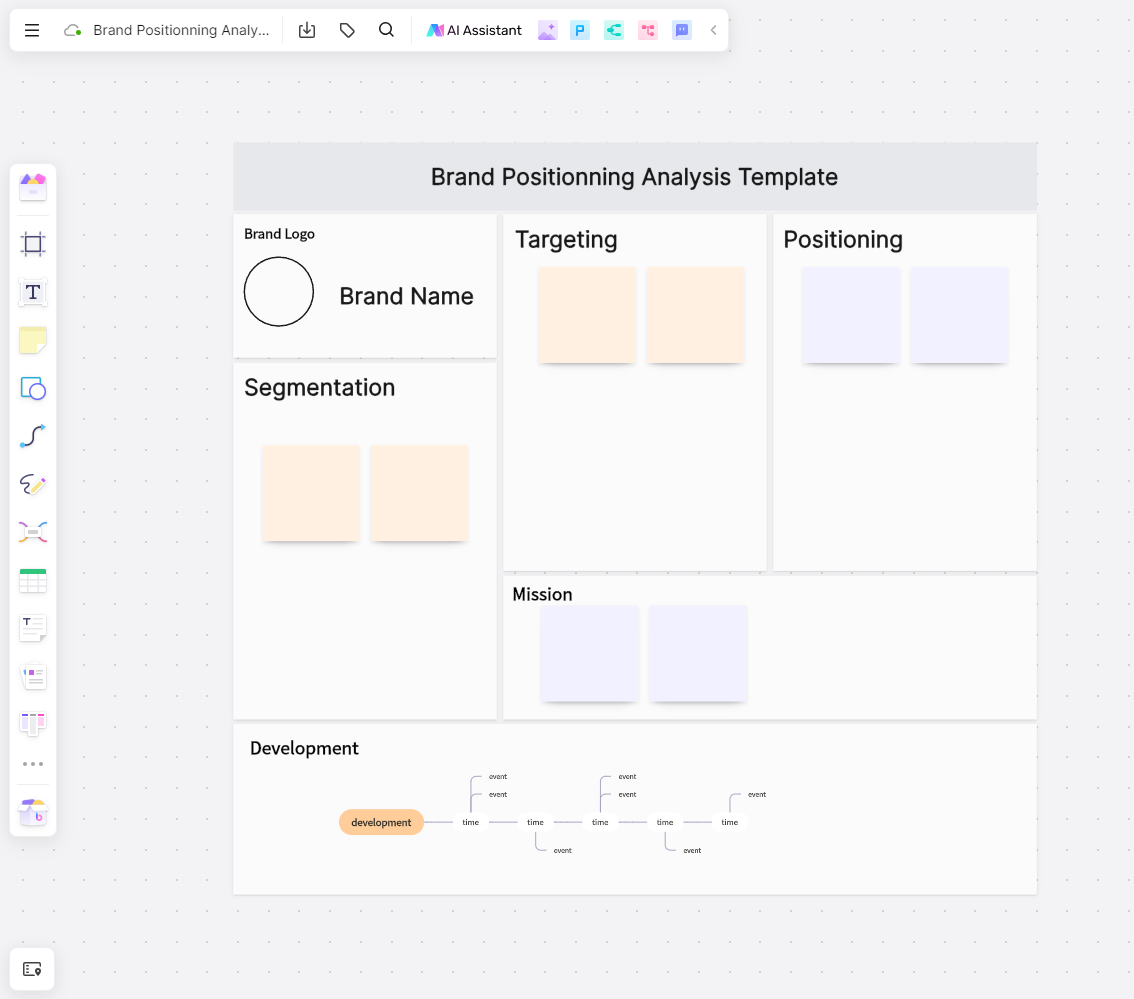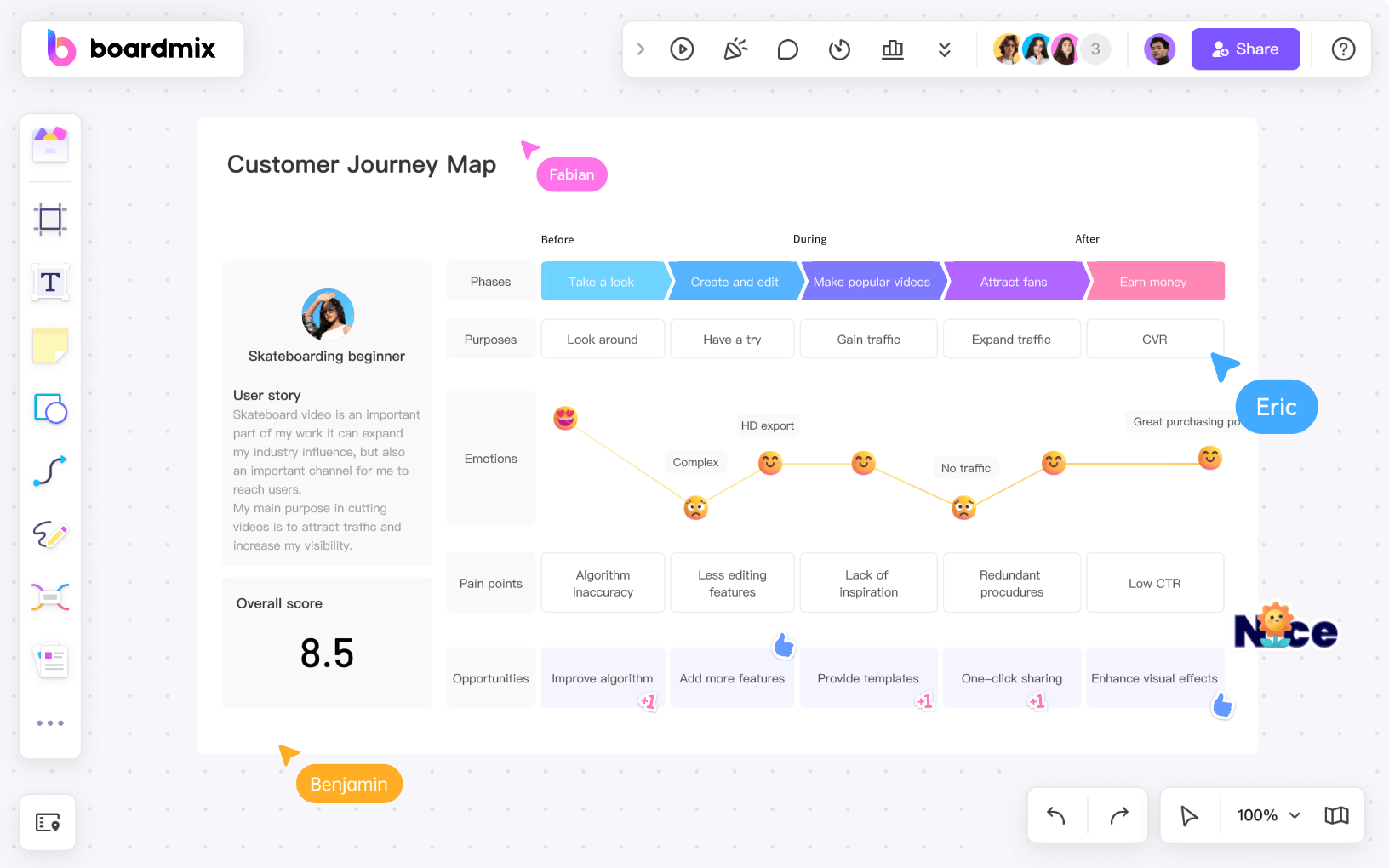Tesla Inc., the world-renowned electric vehicle manufacturer, has made headlines for its innovative technologies and disruptive strategies. This comprehensive analysis will break down how Tesla has successfully segmented, targeted, and positioned itself in the global market, leading to its incredible success.
Tesla Segmentation, Targeting, and Positioning Mind Map
Before diving into the details of Tesla's market segmentation, targeting, and positioning strategies, let's first understand these concepts more comprehensively. A mind map is an excellent tool to visualize the interconnected elements of these marketing strategies. Each branch of the mind map reflects Tesla’s precise and customer-focused approach to market segmentation, targeting, and positioning.

Market Segmentation of Tesla
Tesla’s segmentation strategy is multifaceted and takes into account a range of demographic, geographic, psychographic, and behavioral variables.
From a demographic perspective, Tesla has historically targeted the affluent customer segments given the higher cost associated with electric vehicles. These are customers typically aged between 35-60 years, possessing substantial disposable income. It also appeals to a high degree to both genders but primarily to male consumers who hold a fascination for technological advancement and sleek automobile design.
Geographically, Tesla has primarily targeted urban and sub-urban regions in countries with strong economic backgrounds, like the United States, Canada, and parts of Europe. Moreover, markets with an extensive focus on environmental sustainability like Norway have been major targets for Tesla’s automobiles. Tesla also considers factors like the availability of charging infrastructure while deciding its geographic focus.
Considering psychographic factors, Tesla focuses on consumers who are conscious of the environment and prefer to contribute to sustainability by reducing their carbon footprint. This group is typically comprised of innovative individuals who appreciate technological advancements, specifically in renewable energy and smart technologies.
Lastly, from a behavioral standpoint, Tesla targets consumers who seek unique, stylish, and high-performance vehicles. This includes tech-savvy consumers who want the latest advancements at their fingertips and those who are ready to invest in electric vehicles as a long-term economical solution despite their high initial cost. These customers value the blend of luxury, performance, and environmental friendliness that Tesla’s vehicles provide.
Tesla also targets the business segment to sell its electric semi-trucks, energy storage (Powerpacks), and solar products. These are corporations that are eager to embrace sustainable energy solutions as part of their corporate responsibility or due to the cost-saving potential of renewable energy solutions.
Targeting of Tesla
Tesla’s targeting strategy is distinct and has evolved. Initially, their main target was the luxury segment, encompassing customers with high disposable income who appreciated premium electric vehicles loaded with advanced technologies.
In the initial stages, Tesla introduced the high-priced Roadster sports car in limited quantities to appeal to the ultra-rich segment that desired exclusivity along with a sustainable mode of transport. Targeting this niche segment initially was strategic for Tesla. By aiming at a high-income customer base, they could meet the hefty production costs associated with pioneering electric vehicles while establishing their brand image as a luxury automobile producer.
Gradually, as the company developed and started achieving economies of scale, Tesla introduced new models such as Model S and Model X to appeal to a broader customer base within the premium segment. These cars were designed to appeal to the upper-middle-class demographic who valued comfort, technology, and performance, and were keen on reducing their carbon footprint. The luxury SUV Model X was targeted particularly towards families needing spacious vehicles without wanting to compromise on performance or sustainability.
The targeting strategy took a significant turn with the launch of Model 3 and Model Y. With these models, Tesla aimed to reach out to a broader audience that aspired to own an electric vehicle but was constrained by the high price tags. The Model 3 sedan and Model Y compact SUV were priced more affordably, targeting middle-class consumers keen on owning an environment-friendly vehicle with high performance.
Tesla's business-to-business targeting strategy cannot be ignored. With the introduction of Tesla Semi, an all-electric truck, they started targeting logistic companies and businesses that wanted to lower their operating costs and environmental impact.
Throughout this evolution, one thing has remained constant in Tesla's targeting strategy: the focus on consumers who are environmentally conscious and appreciate innovation in sustainable technology. By offering a range of products catered to different income brackets and user requirements, Tesla has ensured a broader market coverage.
Positioning of Tesla
Tesla has masterfully positioned itself within the automobile industry by leveraging its unique blend of luxury, technology, and sustainability.
At the heart of Tesla’s positioning strategy lies the principle of 'luxury.' Every vehicle produced under the Tesla name boasts opulent design and craftsmanship, paired with premium performance metrics. Tesla vehicles, with their high-tech features, advanced autopilot system, and unparalleled electric-powered performance, have firmly anchored themselves in the luxury automobile segment.
However, unlike traditional luxury automobile manufacturers, Tesla incorporates a heavy emphasis on 'sustainability.' In today's world, where environmental consciousness is growing rapidly, Tesla's eco-friendly electric vehicles have made a significant impact. By positioning itself as a promoter of renewable energy sources, Tesla aligns its brand image with global trends towards sustainability.
Another crucial element in Tesla's positioning strategy is 'innovation.' Known for their cutting-edge technologies, Tesla cars stand for more than just transportation. They represent a technological revolution in the automobile industry, boasting features such as advanced touchscreen controls, over-the-air software updates, state-of-the-art battery technology, and sophisticated self-driving capabilities.
Tesla also successfully positions itself through its CEO, Elon Musk. Musk's persona as a visionary and risk-taking entrepreneur enhances the company's image as an innovative and future-focused brand. His ambitious projects outside of Tesla, like SpaceX and Neuralink, lend further credibility to Tesla's positioning as a front-runner in scientific advancement.
In positioning its energy products, Tesla extends its principles of sustainability and innovation. Products like Powerwall and Solar Roof cater to consumers who wish to lead a sustainable lifestyle beyond just driving electric cars. This has allowed Tesla to position itself not just as an automobile manufacturer but as a comprehensive sustainable energy solution provider.
Tesla Segmentation, Targeting, and Positioning Cheat Sheet
For an at-a-glance summary of how Tesla applies market segmentation, targeting, and positioning principles to enhance its market presence, refer to our cheat sheet. This easy-to-understand graphic provides an overview of Tesla's customer segments, targeting strategy, and brand positioning.

Key Takeaways:Making Brand Positioning Analysis on Boardmix
Tesla’s strategic market segmentation has allowed the company to identify its target customers accurately. This insight paired with their innovative positioning has placed them at the forefront of the electric vehicle industry. While focusing on high-income and environmentally conscious consumers, Tesla continues to broaden its customer base by introducing more accessible models.
For those looking to emulate such success in your businesses, we recommend our Boardmix solution. Utilizing tools such as our pre-built Market Segmentation Template and STP Analysis Template can assist you in accurately segmenting your market and successfully targeting and positioning your brand.
Understanding your brand's unique position in the market can give your business a competitive edge. Boardmix is an excellent tool for conducting a brand positioning analysis, providing various benefits.

1. Structured Analysis
With Boardmix, you can use or create custom templates for your brand positioning analysis. These templates can guide you through the process, ensuring that all vital factors - such as Unique Selling Proposition (USP), target audience, brand values, brand personality, and key differentiators - are thoroughly addressed.
2. Collaboration
Brand positioning analysis often requires insights from various team members - from marketing to product development. Boardmix's collaboration features make it easy to involve your entire team in the process, facilitating an exchange of ideas and perspectives that can enrich your analysis.
3. Accessibility
With Boardmix, your brand positioning analysis is not just a static document. It's a dynamic resource that's accessible to your team members anytime, anywhere. This makes it easier to keep everyone aligned on your brand's positioning and strategic direction.
4. Iterative Refinement
The market is constantly evolving, and so should your brand positioning. Boardmix makes it easy to update your analysis as your brand grows and the market changes. You can easily add new insights, adjust your strategies, and keep your team informed about these changes.
5. Integrated Feedback
The platform allows stakeholders to provide their feedback directly on the analysis. This integrated feedback system streamlines communication and makes it easier to refine your brand positioning based on valuable input.
6. Historical Reference
Your previous brand positioning analyses on Boardmix can serve as valuable historical references. Comparing your current positioning with past strategies can offer insights into how your brand has evolved.
By facilitating collaboration, structuring analysis, and offering flexibility, Boardmix is a beneficial tool for any company looking to deepen its understanding of its brand positioning.













